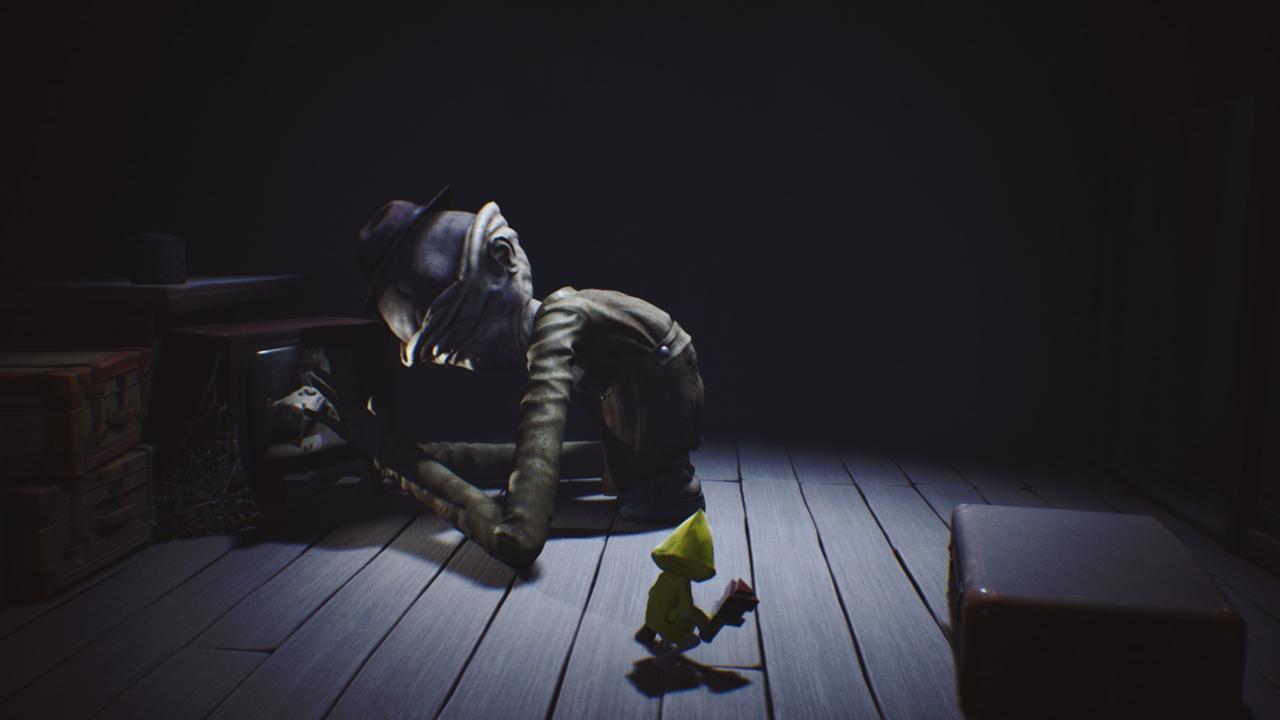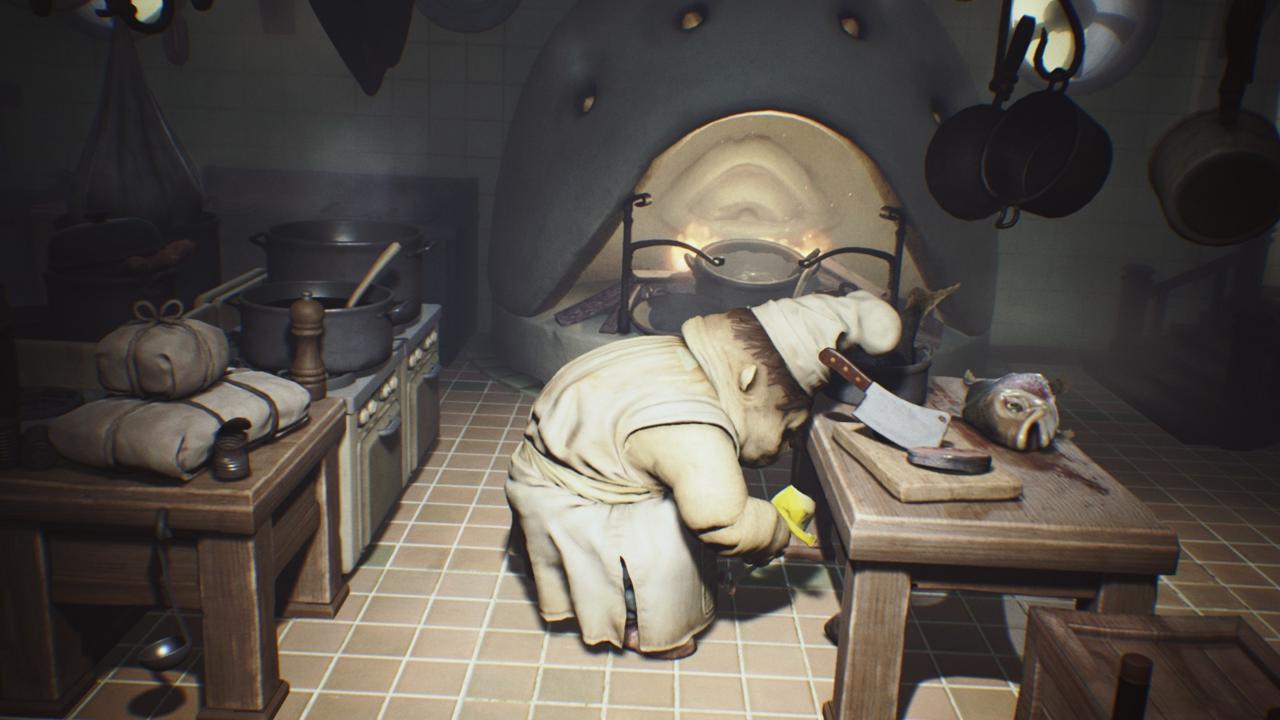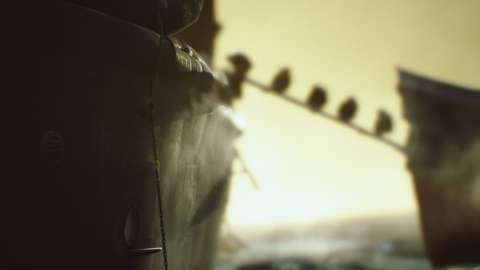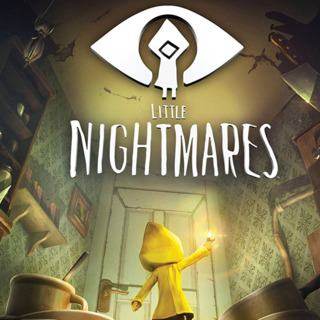From a mouse's perspective, humans must be terrifyingly messy giants. We eat huge quantities of food, drop some of it, and waste half of it. Our living areas are cluttered with gadgets, furniture, and trinkets. And we make loud sounds when talking and walking. It’s no wonder that mice explore at night when the monsters are asleep. Little Nightmares is an abstract look at what it would like to be a mouse. But you are no mouse and the giants are not snoozing. You are a young girl, named Six, that wears a bright yellow raincoat and avoids massive disfigured beings deep in the belly of a strange naval vessel. While Little Nightmares is chiefly a puzzle-platformer, it also dips its toes into horror and stealth. Like Playdead’s most recent game, Inside, this is a game that keeps a deliberate pace and forges gentle unease as you control a vulnerable little creature through a dark fantasy world. Little Nightmares is largely successful in its efforts and offers solid platforming, with effective stealth, to work its mousey magic.

When it comes to platforming, Six's undersized stature ensures that navigating the boat's interiors is rarely straightforward. Just opening a door might require dragging a chair so you can leap onto the handle and disengage the latch. To get through the various rooms, Six will climb bookshelves, open drawers to create steps, drag boxes to make platforms, crawl under floorboards, throw objects at switches, and swing on hooks. There is not much here that betrays the genre, just twisted slightly to suit Six's tiny relative size. The execution is good though, aided in no small part by the slick animation of Six as she darts around the oversized rooms.
The boat, called The Maw, rocks back and forth under the forces of the ocean. Objects sway in synchronisation; doors swing open gently and toilet rolls hurtle across the blood-stained tiled floors. Occasionally this tilting motion is used for the puzzles, like when crossing a chasm on a swinging piano, but it is mostly a subtle and clever visual effect. This gentle oscillating movement is also an example of how the world around Six tells its own story, because there is no direct narrative. While The Maw is a great setting on its own, it would have been interesting to see the undulating effect escalate into a dangerous threat or play a bigger role when it came to navigation or puzzles.
Little Nightmares is a 3D platformer, so not only can you move left-right and up-down, you can venture into the depths of the environments. Most areas in The Maw are fairly typical of a 2.5D adventure, yet there are tables in the foreground to climb on and keys in the background to pick up. The camera maintains a traditional side-scrolling position although you have some control over its look-direction in order to view the ceiling or glance at the corners. Depth perception is good, despite the fixed camera, assisted by the shadows and sensible interior designs. Some kind of zoom option, to investigate those deeper areas, would have been nice although Six looks quite vulnerable when dwarfed by the world. There is certainly added challenge when crossing narrow platforms because of the full 3D movement, as moving slightly out of parallel will see Six fall to her death.
Aside from a few errant deaths, there is not a huge challenge to be found when progressing through the ship's interior. Movement speed is slow to encourage gradual exploration. And although progress is usually left to right, finding the correct route can be tricky because the exit might be obscured. One of the harder puzzles involved dragging meat to make sausages that were later used as a rope swing, but it was only hard because one piece of meat was hidden in a dark corner. Fortunately Six has a lighter to brighten the immediate surrounds, although it is rarely needed. Once you find the way through, executing the various jumps is usually not hard. Sometimes the obvious route turns out to be a hidden area containing one of the little cone-headed creatures that you can hug to access more concept art. This hugging is a form of reassurance, as these little guys are typically frightened and hide from the unusual beings that you will have to carefully avoid.

Six's biggest challenge comes during the stealth sections. Certain parts of the ship are populated by unusual and grotesque humanoids hell-bent on catching you and possibly seeing what you taste like. Twin chefs, with breathing issues, must be avoided to make it through the unhygienic kitchen. Before that, a blind Janitor's long arms will grab you hiding under beds or on top of shelves, although you can distract him briefly with thrown objects. To avoid any of these foes, you are best off sticking to the shadows, crouch-walking, and hiding under tables. If you are spotted (or heard) then running may get you to safety under a cabinet. In general the stealth works fine but some of it lacks refinement. You may need to replay sections a few times, because it's not always clear what the game wants; it might want Six to wait, hide, or start running after stealth abruptly transitions into a chase.
When sneaking is off the table, you may need to move those little legs as fast as possible to escape pursuers. Running is the only option in scripted chase sequences, although they are generally well crafted. One of these chases occurs after you come across guests gorging themselves on food served aboard the submerged vessel. The gluttons are almost too busy eating their sausages to see you scurrying about, but some get hungry enough to crawl after you. These chase sequences require efficient movement on a more direct route. They are also one of the game's highlights because they can be quite funny despite the disgusting threat, and it's a shame the game did not feature more chases.
Little Nightmares is powered by Unreal Engine 4 and it might be one of the most consistently bizarre uses of the engine. The developers at Tarsier Studios have excelled because of the detail found in each room, from the deadly leeches to the piles of dishes stacked up to the ceiling. l composition. This unusual world has been created with utmost care and is sure to captivatCareful lighting and grimy colors sets the perfect mood aboard the vessel. And of course, the mutant humanoid giants look awesome. Better still might be the soundtrack, which frequently sounds like a child's haunted music box. The music relies heavily on simple piano notes, echoes, clanking sounds, and creepy humming. The subtle notes purposefully clash and yet it works quite well. It makes for a unique sound that culminates into an excellent finae. Hopefully The Maw, or other places in this universe, can be explored more in the future

It is a pity that Little Nightmares is only four hours long, because it's a likeable puzzle-platformer with an alluring streak of creativity. Its weird world, set in the belly of a massive submerged vessel, contains disfigured giants that want to catch any little creature roaming about. The warped interior designs are well suited to the basic jumping and climbing action that involves helping a little girl move through a supersized world. And this action is shaken up with some appropriate stealth and chase sequences that are both whimsical and grotesque. It all goes so well together because of excellent visual design and awesome music. Aside from some trial and error during stealth, and simplistic platforming, Little Nightmares gets most things right. It may be a short game, but good things come in small packages.

